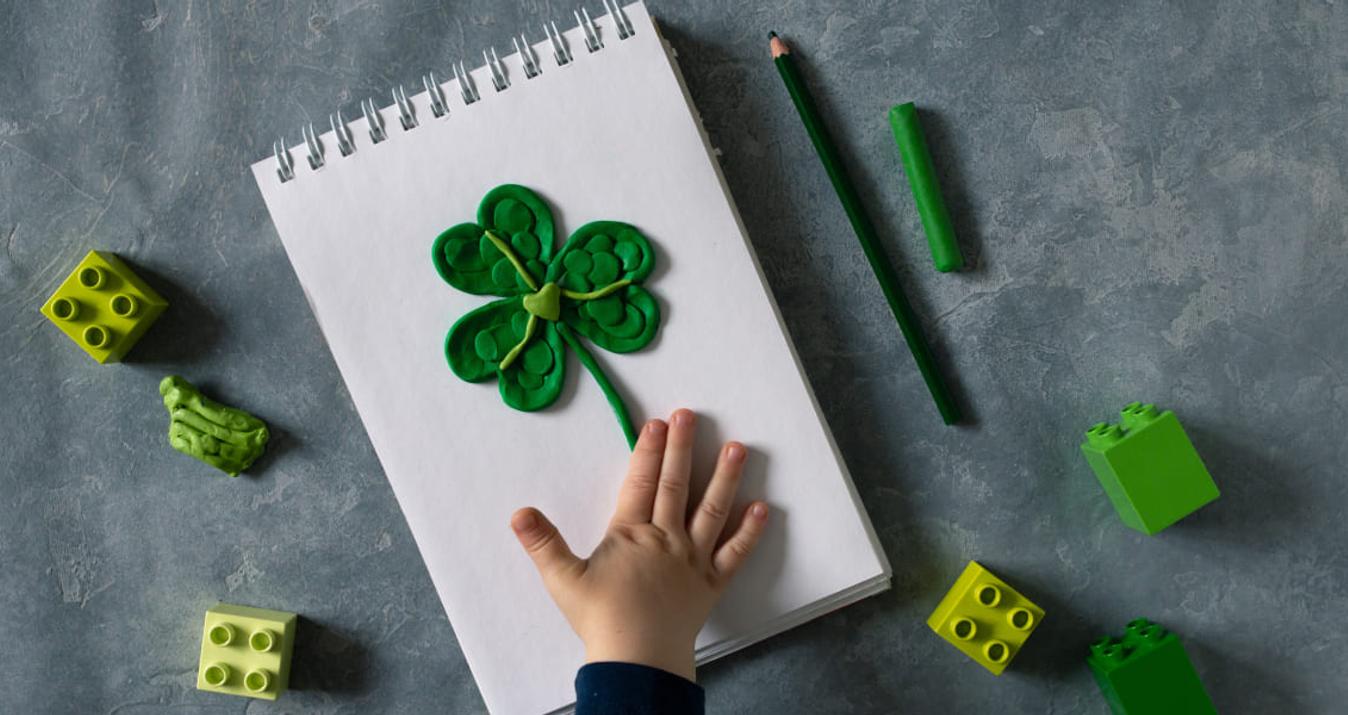10 Ways to Tell if an Image Has Been Photoshopped
November 05, 2025

Find out how to detect Photoshopped images. This guide shows 10 clues—from inconsistent shadows to blurred edges—that reveal photo manipulation.
In the modern era, it is safe to say that the majority, if not all, of the photos you see used in advertising have been manipulated to some degree. Whether it is for skin textures, altering a background, or even resizing facial features, there will be some alterations going on behind the scenes. Thanks to AI tools, these changes are now even more advanced, with features such as Luminar Neo’s sky replacement tool allowing photographers to completely reimagine their shots.
Understanding how a photo may have been manipulated, or better yet, noticing where it has occurred, is an important skill for photographers to develop. It helps them set realistic goals for their work and distinguish between what is possible in-camera and what can be achieved during editing.
In this article, we are going to focus on Photoshop. It’s a tool commonly used in the industry no matter what genre of photo it is. So, let’s take a look at ten examples of what to watch out for when trying to tell if an image has been Photoshopped. Let’s begin!
The 10 Ways to Tell if an Image Has Been Photoshopped
1. Lighting Direction
 An easy giveaway is inconsistencies in the lighting and shadows across the image. For example, the lighting on the subject may differ from that of the surrounding environment. Even within the subject, such as their outfit or accessories, there may be signs of a different light source, suggesting they have been composited in. For more skilled Photoshop users these changes can be harder to spot, but by zooming in on the shadows within the image, you may see softer edges in some areas, indicating that they have likely been Photoshopped into the scene.
An easy giveaway is inconsistencies in the lighting and shadows across the image. For example, the lighting on the subject may differ from that of the surrounding environment. Even within the subject, such as their outfit or accessories, there may be signs of a different light source, suggesting they have been composited in. For more skilled Photoshop users these changes can be harder to spot, but by zooming in on the shadows within the image, you may see softer edges in some areas, indicating that they have likely been Photoshopped into the scene.
2. Reflections and Highlights
 Shiny surfaces are a photographer’s and editor’s worst nightmare. Not only are they difficult to work with when considering what reflections may reveal, but they can also be hard to edit realistically. For this reason, such surfaces are an excellent place to start when inspecting an image for compositing or Photoshop work. Check to see whether the reflections are consistent with the surrounding environment. Again, lighting direction can be a giveaway, with reflections coming from unusual angles or missing altogether. Look carefully at sunglasses, mirrors, water, and other reflective surfaces.
Shiny surfaces are a photographer’s and editor’s worst nightmare. Not only are they difficult to work with when considering what reflections may reveal, but they can also be hard to edit realistically. For this reason, such surfaces are an excellent place to start when inspecting an image for compositing or Photoshop work. Check to see whether the reflections are consistent with the surrounding environment. Again, lighting direction can be a giveaway, with reflections coming from unusual angles or missing altogether. Look carefully at sunglasses, mirrors, water, and other reflective surfaces.
3. Check Skin Textures and Pores
 As much as we strive for flawless skin, it simply does not exist. Real skin shows pores, texture, and a mixture of tones. A Photoshopped image, however, will often show the opposite: perfectly smooth, unrealistic skin. A common mistake in edited images is that while the face may look flawless, the same attention may not have been applied to other visible areas such as the hands and neck, creating inconsistency. So, although having a make-up artist on set can help achieve a professional look, a great deal of post-production work is usually still required.
As much as we strive for flawless skin, it simply does not exist. Real skin shows pores, texture, and a mixture of tones. A Photoshopped image, however, will often show the opposite: perfectly smooth, unrealistic skin. A common mistake in edited images is that while the face may look flawless, the same attention may not have been applied to other visible areas such as the hands and neck, creating inconsistency. So, although having a make-up artist on set can help achieve a professional look, a great deal of post-production work is usually still required.
4. Spot Repetition or Pattern Cloning
 This may be difficult to notice at first, but your eye will become more trained over time. Cloning is a common Photoshop technique, particularly effective when removing elements from an image. By zooming in, especially on the background, you may notice the repetition of certain textures or areas where the clone stamp or healing brush has been used. Whenever you see repeated patterns or blurry patches, it is likely that something has been removed from the image.
This may be difficult to notice at first, but your eye will become more trained over time. Cloning is a common Photoshop technique, particularly effective when removing elements from an image. By zooming in, especially on the background, you may notice the repetition of certain textures or areas where the clone stamp or healing brush has been used. Whenever you see repeated patterns or blurry patches, it is likely that something has been removed from the image.
5. Warped and Distorted Lines
 A clear sign of Photoshopping is distorted lines in an image. This could refer to the sides of buildings, pavements, or power lines. By zooming in, you may spot inconsistencies or soft areas compared to their surroundings. A particularly common place to find this is around any subjects in a shot. Reshaping models is common practice, and inexperienced editors often neglect to correct background distortions caused by body adjustments.
A clear sign of Photoshopping is distorted lines in an image. This could refer to the sides of buildings, pavements, or power lines. By zooming in, you may spot inconsistencies or soft areas compared to their surroundings. A particularly common place to find this is around any subjects in a shot. Reshaping models is common practice, and inexperienced editors often neglect to correct background distortions caused by body adjustments.
Your AI-Powered Photo Editor for MacOS and Windows
Discover Now!6. Analyse Colour and Contrast
 Another clue lies in the colours of the image. As a photographer, you will already know that colours can be altered through saturation and hue adjustments, but the key here is spotting inconsistencies. Changes may be subtle or striking, yet differences in tone across specific areas can suggest compositing or Photoshopping. You can also inspect the white balance to see if some areas appear warmer or cooler than others.
Another clue lies in the colours of the image. As a photographer, you will already know that colours can be altered through saturation and hue adjustments, but the key here is spotting inconsistencies. Changes may be subtle or striking, yet differences in tone across specific areas can suggest compositing or Photoshopping. You can also inspect the white balance to see if some areas appear warmer or cooler than others.
7. Inspect Edges
 Every edge and line in a photo can be a clue to detect compositing work. By zooming in, you can compare lines to others within the image. Look for haloing around edges, which appears as a faint lighter outline. Another giveaway is jagged lines where the rest of the edge appears smooth. These kinds of instances would suggest that various images have been composited together or cloning and patching work has occurred.
Every edge and line in a photo can be a clue to detect compositing work. By zooming in, you can compare lines to others within the image. Look for haloing around edges, which appears as a faint lighter outline. Another giveaway is jagged lines where the rest of the edge appears smooth. These kinds of instances would suggest that various images have been composited together or cloning and patching work has occurred.
8. Proportions and Perspectives
 Resizing facial features is common in portrait work, with eyes, noses, and mouths often adjusted. Sometimes, these edits leave evidence, such as features looking slightly squashed or stretched. The surrounding skin may also appear inconsistent or overly soft compared to nearby areas. The same applies to background elements, where resizing can cause perspective issues. If certain objects in the background have been altered, they may appear warped or misaligned with the scene’s perspective.
Resizing facial features is common in portrait work, with eyes, noses, and mouths often adjusted. Sometimes, these edits leave evidence, such as features looking slightly squashed or stretched. The surrounding skin may also appear inconsistent or overly soft compared to nearby areas. The same applies to background elements, where resizing can cause perspective issues. If certain objects in the background have been altered, they may appear warped or misaligned with the scene’s perspective.
9. Examine Depth of Field and Focus
 When a camera captures a natural shallow depth of field, focus falls off gradually, keeping the subject sharp and the background soft. This can be recreated in Photoshop, though it often leaves inconsistencies. For instance, a face may be sharp while objects at the same distance appear blurred. This suggests that multiple images have been composited or that a blur effect was applied in post-production. By zooming in on the face, you can check whether focus falls off naturally or changes abruptly, which would indicate it was not achieved in-camera.
When a camera captures a natural shallow depth of field, focus falls off gradually, keeping the subject sharp and the background soft. This can be recreated in Photoshop, though it often leaves inconsistencies. For instance, a face may be sharp while objects at the same distance appear blurred. This suggests that multiple images have been composited or that a blur effect was applied in post-production. By zooming in on the face, you can check whether focus falls off naturally or changes abruptly, which would indicate it was not achieved in-camera.
10. Noise and Grain
 Finally, check the noise and grain within the image. You may find that some areas appear noisier or smoother than others, suggesting multiple photos were composited together. In a genuine photo, darker areas naturally reveal more noise than lighter ones. In a composite, comparing areas of similar tone can help reveal mismatches that indicate separate sources. Different levels of noise reduction applied to various images can also create uneven textures once combined.
Finally, check the noise and grain within the image. You may find that some areas appear noisier or smoother than others, suggesting multiple photos were composited together. In a genuine photo, darker areas naturally reveal more noise than lighter ones. In a composite, comparing areas of similar tone can help reveal mismatches that indicate separate sources. Different levels of noise reduction applied to various images can also create uneven textures once combined.
The Bottom Line
Seeing a high-quality photo on an advertising board or in a magazine can be disheartening for photographers when they compare that work to what their own camera can achieve.
However, once a photographer understands the difference between what can be achieved in-camera and what work is done on a computer, it can be very encouraging.
As they gain more experience, photographers begin to spot Photoshop work in the images they view. By zooming in on areas such as lines and edges, they may notice haloing, jagged edges, or perspective inconsistencies in the background.
So, if you are one of those photographers who has felt daunted by the difference in quality between your images and those seen in advertising, worry not. Photoshopping is a skill that photographers learn to enhance their images, and no matter your current level, you can learn these skills too.





